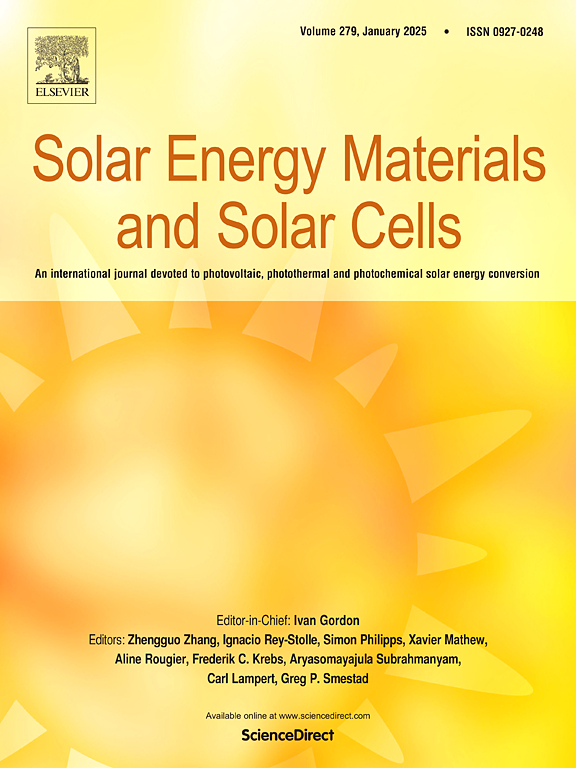TOPCon太阳能电池的UVID:不同工艺对前钝化Al2O3层厚度和回收率的影响
IF 6.3
2区 材料科学
Q2 ENERGY & FUELS
引用次数: 0
摘要
紫外线诱导降解(UVID)已成为隧道氧化物钝化接触(TOPCon)太阳能电池在野外作业中的一个重要问题,因为它们对紫外线辐射的敏感性增加。研究了不同厚度Al2O3钝化层对TOPCon太阳能电池的抗紫外辐射性能。当Al2O3薄膜厚度从2.8 nm增加到4.1 nm时,UVID对TOPCon模块的最大功率损失(Pmax)从3.24%降低到0.85%。这表明增加Al2O3薄膜的厚度可以有效地提高TOPCon太阳能电池的抗紫外线照射能力。暴露后处理对紫外线降解细胞恢复的影响也进行了研究。通过自然光照和温度辅助电注入处理,可以恢复因紫外线照射而退化的太阳能电池和组件,这可以归因于通过增加Al2O3介质中的电荷密度来增强场钝化。提出了一种潜在的UVID机制,并通过电荷捕获和脱捕过程对其进行回收,为TOPCon模块在实际运行中UVID的可能解决方案提供了思路。本文章由计算机程序翻译,如有差异,请以英文原文为准。
UVID of TOPCon solar cells: Effect of the front passivation Al2O3 layer thickness and recovery by different processes
UV-induced degradation (UVID) has become a significant issue in tunneling oxide passivation contact (TOPCon) solar cells during field operation due to their increased sensitivity to UV radiation. The UV irradiation resistance of TOPCon solar cells passivated by Al2O3 layers of different thicknesses was studied. As the thickness of the Al2O3 film increases from 2.8 nm to 4.1 nm, the loss of maximum power (Pmax) of TOPCon modules from UVID decreases from 3.24 % to 0.85 %. This indicates that increasing the thickness of the Al2O3 film can effectively improve the UV irradiation resistance of TOPCon solar cells. The effects of post-exposure treatments on recovery of the UV-degraded cells have also been investigated. The degraded solar cells and modules caused by UV exposure can be restored through natural sunlight and temperature-assisted electric injection treatment, which can be attributed to increased field passivation by increasing the charge density in Al2O3 medium. A potential mechanism for UVID and its recovery through the process of charge trapping and detrapping is proposed, which could offer an insight into the possible solutions for UVID of TOPCon modules in actual operation.
求助全文
通过发布文献求助,成功后即可免费获取论文全文。
去求助
来源期刊

Solar Energy Materials and Solar Cells
工程技术-材料科学:综合
CiteScore
12.60
自引率
11.60%
发文量
513
审稿时长
47 days
期刊介绍:
Solar Energy Materials & Solar Cells is intended as a vehicle for the dissemination of research results on materials science and technology related to photovoltaic, photothermal and photoelectrochemical solar energy conversion. Materials science is taken in the broadest possible sense and encompasses physics, chemistry, optics, materials fabrication and analysis for all types of materials.
 求助内容:
求助内容: 应助结果提醒方式:
应助结果提醒方式:


